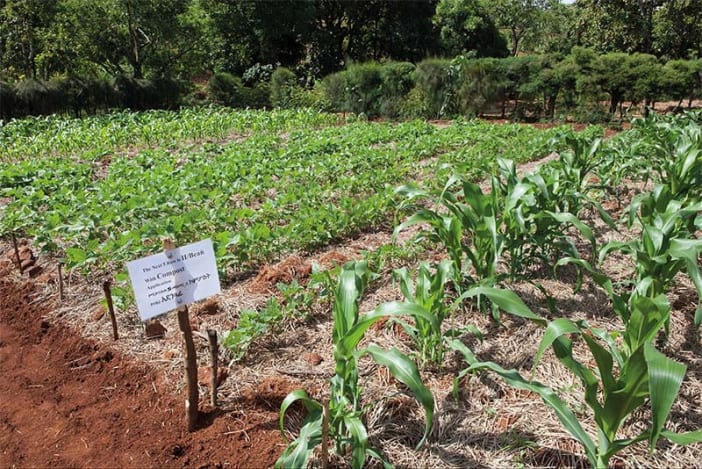By Jim Rowland.
Anything that grows requires food, water, an energy supply and space. This is true whether we are talking about humans (especially children!), livestock, trees or crops. Human beings grow best where there are plenty of these resources and struggle, or die where there are not enough. Poor soil and over-population produce famine.
It is rather like that with agriculture also. Too many animals leads to overgrazing, which in turn damages grass and young trees. Then the grazing will produce even less and animals become unhealthy or starve. Too few animals on good grazing means that not all the grazing is used. The animals will choose the best grasses and leave the rest. Then the grazing will gradually become more weedy and less productive. Numbers of livestock need to be balanced with the grazing available to produce the greatest amount of milk or meat from the land.
Crops behave in a similar way. Where the soil is fertile, with plenty of sunshine and rain, they can be planted more closely and yet still each plant usually produces well. Then soil fertility is poor, especially when there is little rain, fewer plants and wider spacing must be used.
People who farm in semi-arid areas know that sometimes, just a little extra rain falling at the right time can make a very big difference to crop yields. If rain is poor then the crop may survive until flowering, but then there may not be enough water in the soil to mature the seeds. So even a small amount of rainfall after flowering may mean that each acre will produce a few sacks of grain, instead of none.
But what if no rain is likely to fall after flowering? How can farmers still get a yield from their land? In dry conditions, these farmers must try to plant their crops in ways which will prevent the growing crops from using up all the water in the soil before flowering. Water must be kept in the soil for the grain-filling stage.
The pattern and spacing of crops will affect the soil’s ability to hold water. Farmers can take advantage of this by spacing the plants close together within the rows, but leaving large spaces between the rows. Look at diagrams A, B and C below. They show three different ways of planting the same-sized piece of land. In A the young plants will compete with each other for light and will grow smaller leaves and fewer tillers. This means they will use less water. The roots of the crop will reach out to use up the water stored in the soil between the rows. This way of spacing crops will not always give the highest yields, but it will give a yield in dry years. In these areas, the farmer’s main aim may be to reduce the risk of not getting any harvest, rather than hoping for a high yield in the occasional good year.
In dry areas, the farmer may also use a lower seed rate. It is important to remember that low seed rates and rectangular spacing are only effective if the land is weeded well. Otherwise, weeds will grow in the wide spaces between plants and will quickly use up all the water stored between the rows.
In areas where there is better rainfall, the spacings in B and C can be used. The plants will have more room to grow larger. With good soils and good rainfall, planting crops in a square arrangement, as in C, will give the very highest yields.
Sometimes it may not be easy to convince farmers of the benefits of planting in lines. Encourage them to experiment first with small areas of land. Sometimes it may be more important to get the crop planted quickly by broadcasting seed and ploughing it in, than by taking extra time and labour planting in lines. Think of ways to help this situation. On softer soils, seed can sometimes be planted before the rains. Simple seed planters could be used, or seeds can be planted in the plough furrows to save time. Planting in lines does take extra time and labour but it will make weeding much quicker. Mechanical weeders can be attached to oxen or a tractor to speed up weeding. Sometimes a quick-growing vegetable can be grown between the rows.
In most parts of the tropics, the kind of seeds the farmer plants, and the way in which they are planted, are two of the very few things which he can control – but they can have a great effect on the yields.
A. Rectangular Arrangement
8 plants per square metre
Each plant uses: 12.5 cm x 100 cm = 1,250 sq cm
B. Intermediate Arrangement
8 plants per square metre
Each plant uses: 25 cm x 50 cm = 1,250 sq cm
C. Square Arrangement
8 plants per square metre
Each plant uses: 35 cm x 35 cm = 1,225 sq cm
Jim Rowland worked with the Karamoja Seed Scheme in Uganda for many years with BCMS.









